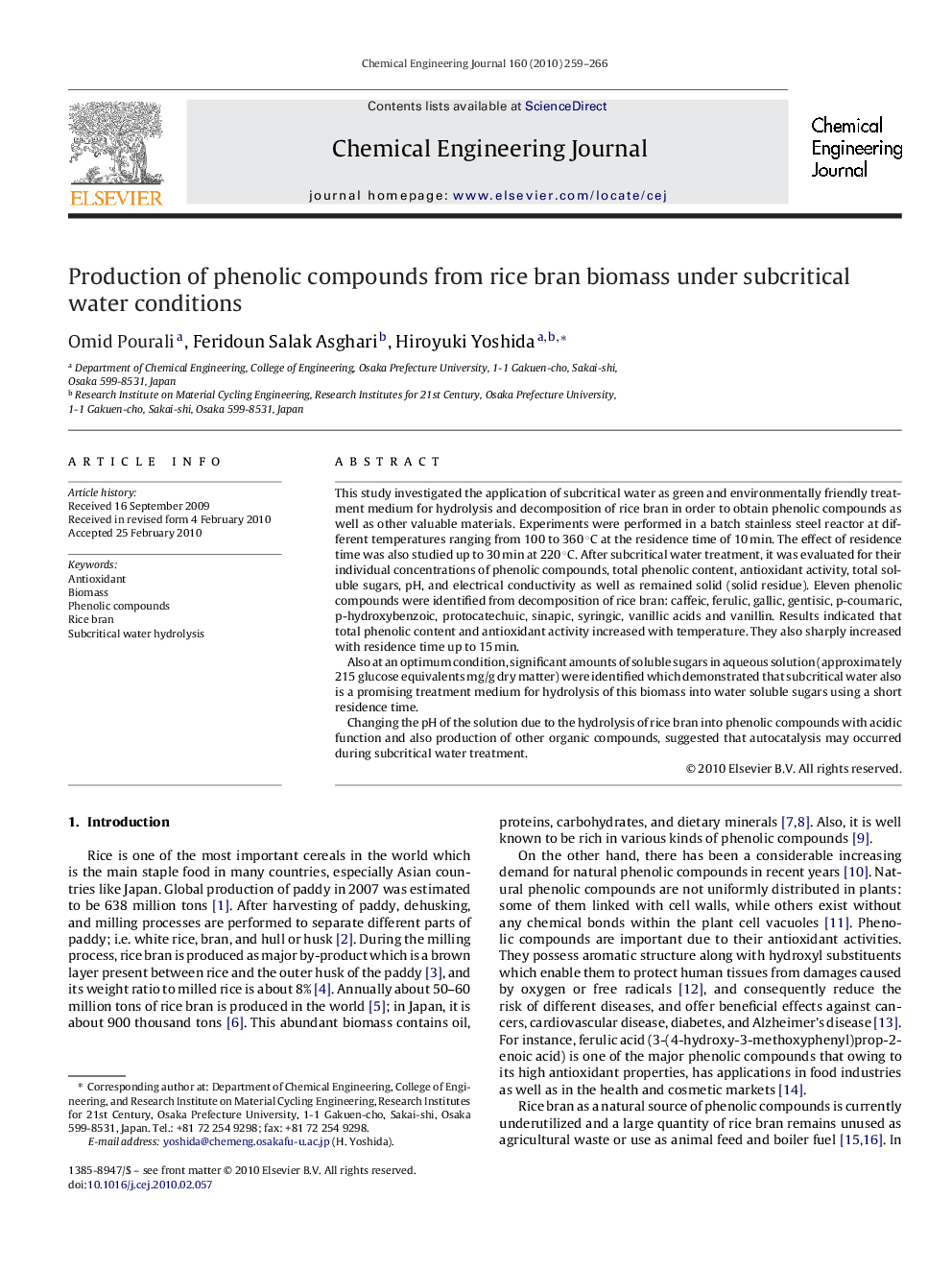| Article ID | Journal | Published Year | Pages | File Type |
|---|---|---|---|---|
| 151851 | Chemical Engineering Journal | 2010 | 8 Pages |
This study investigated the application of subcritical water as green and environmentally friendly treatment medium for hydrolysis and decomposition of rice bran in order to obtain phenolic compounds as well as other valuable materials. Experiments were performed in a batch stainless steel reactor at different temperatures ranging from 100 to 360 °C at the residence time of 10 min. The effect of residence time was also studied up to 30 min at 220 °C. After subcritical water treatment, it was evaluated for their individual concentrations of phenolic compounds, total phenolic content, antioxidant activity, total soluble sugars, pH, and electrical conductivity as well as remained solid (solid residue). Eleven phenolic compounds were identified from decomposition of rice bran: caffeic, ferulic, gallic, gentisic, p-coumaric, p-hydroxybenzoic, protocatechuic, sinapic, syringic, vanillic acids and vanillin. Results indicated that total phenolic content and antioxidant activity increased with temperature. They also sharply increased with residence time up to 15 min.Also at an optimum condition, significant amounts of soluble sugars in aqueous solution (approximately 215 glucose equivalents mg/g dry matter) were identified which demonstrated that subcritical water also is a promising treatment medium for hydrolysis of this biomass into water soluble sugars using a short residence time.Changing the pH of the solution due to the hydrolysis of rice bran into phenolic compounds with acidic function and also production of other organic compounds, suggested that autocatalysis may occurred during subcritical water treatment.
